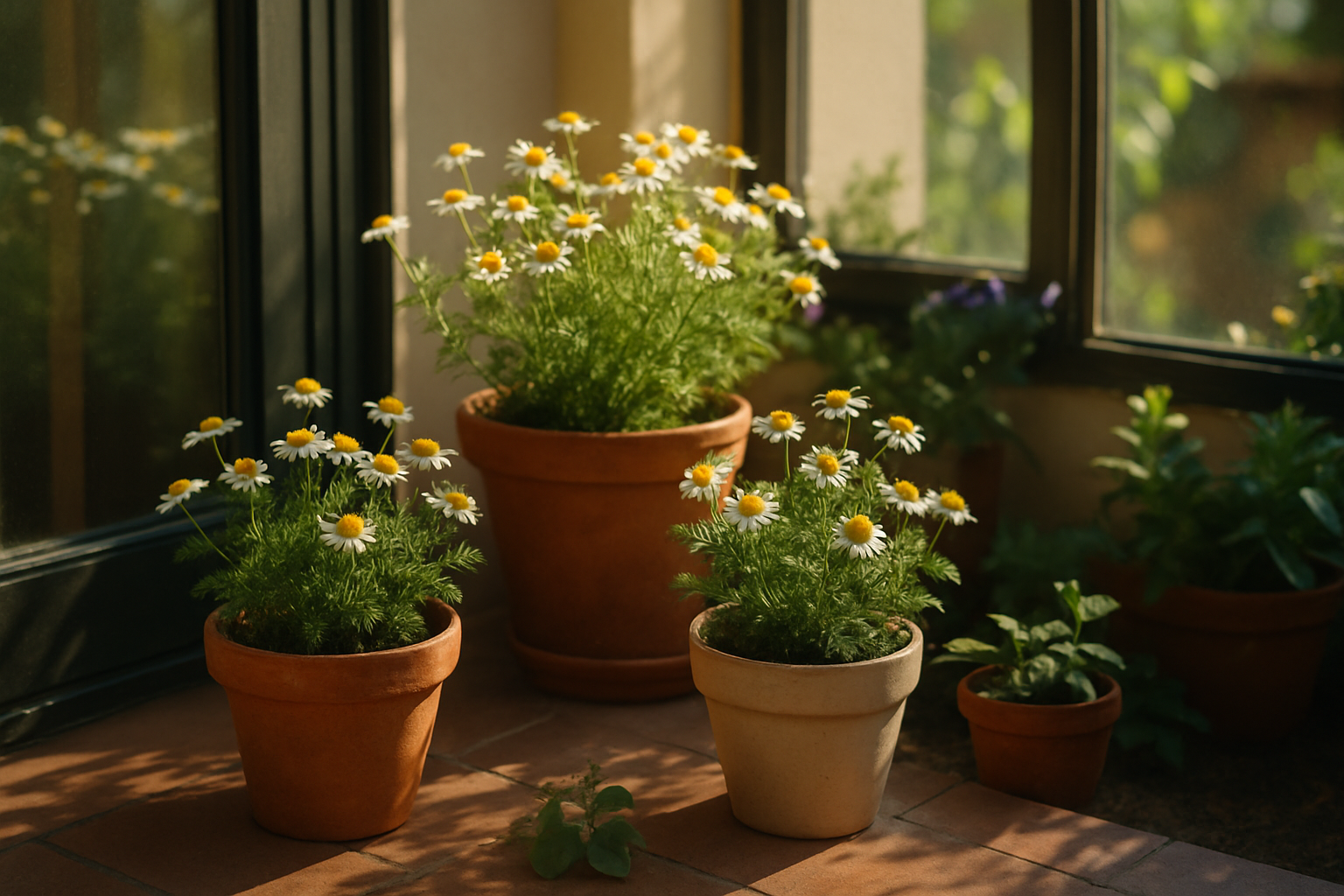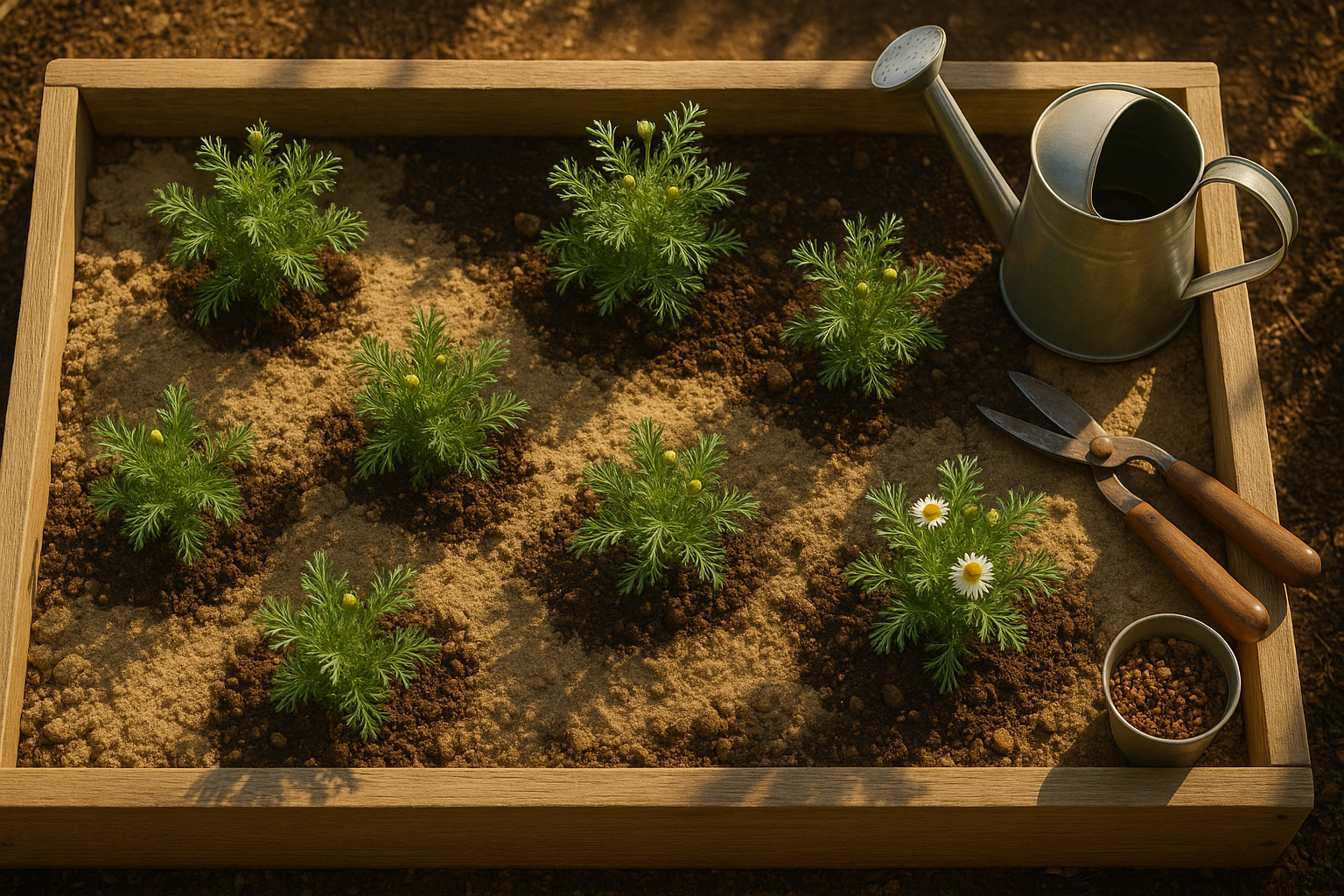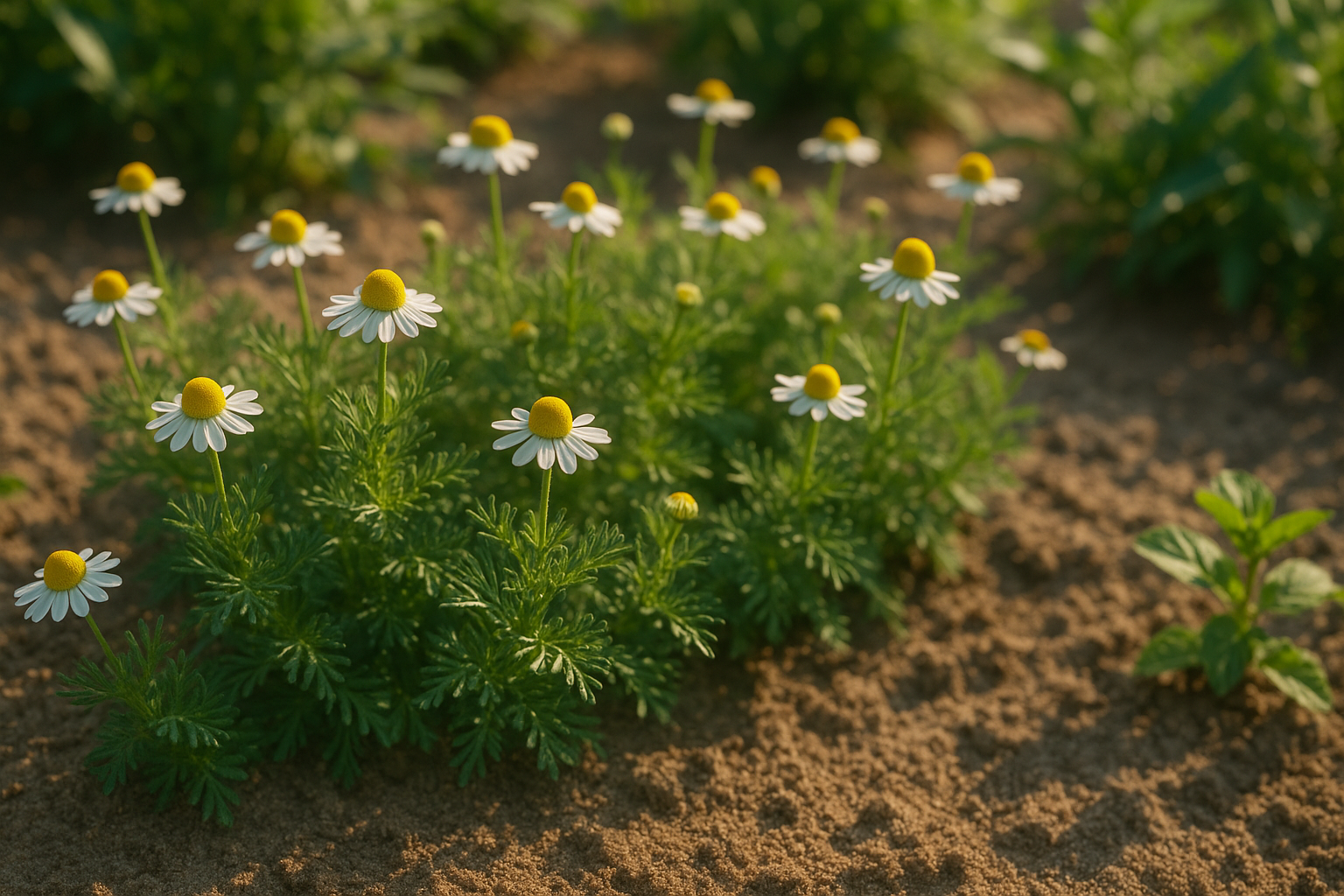Introduction
Chamomile sunlight needs are a common concern for gardeners and tea lovers aiming to cultivate this gentle, fragrant herb at home. Known for its delicate daisy-like flowers and calming qualities, chamomile holds a special place in herbal tea blends and cottage gardens alike. But before you start planting chamomile in your backyard or pots, it’s crucial to answer one pressing question: does chamomile need full sun or shade to truly thrive?
Choosing the right spot can dramatically affect your plant’s health, flower yield, and the soothing qualities you’ll enjoy in every cup of homemade tea. In this article, we’ll explore the ideal light requirements for both German and Roman chamomile, and how sunlight impacts blooming and flavor.
You’ll also get practical planting tips, like how to adjust for partial shade or indoor growing, and learn from real-world examples of what happens when chamomile doesn’t get what it needs. We’ll finish with easy solutions for common sunlight problems, ensuring even beginner gardeners can cultivate vibrant, healthy chamomile, whether in a sunny patch or a shadier corner of the garden.
If you’ve ever wondered how much light your chamomile really wants, read on—you’re about to become an expert.
Chamomile’s Light Requirements

Sunlight plays a vital role in the health and productivity of chamomile, directly influencing its growth, flavor, and flower yield. In gardening terms, “full sun” means an area receives at least six hours of direct sunlight a day, “partial shade” refers to four to six hours, and “full shade” is less than four hours, often filtered light.
Both German and Roman chamomile thrive best in full sun, where their foliage stays lush and flowers develop their characteristic sweet, apple-like scent. While Roman chamomile can tolerate partial shade—especially in hot climates where some afternoon relief prevents leaf scorch—it still performs best on a sunny windowsill, patio, or in garden beds that catch direct rays.
German chamomile, the annual variety most often grown for tea, needs full sun to produce its delicate white and yellow blossoms prolifically. In shade, its stems may become leggy, flop over, and yield fewer flowers. Insufficient sunlight leaves chamomile plants weak, spindly, and muted in flavor, making them susceptible to mildew or pests and disappointing when it comes time to harvest.
For the strongest, most fragrant chamomile, experts recommend planting in spots that catch morning to early afternoon sunlight while avoiding shaded areas near tall buildings or dense shrubs. If you garden indoors, place your chamomile near south- or west-facing windows, or supplement with a grow light if natural light is scarce.
By monitoring your plant’s exposure and watching for signs of limp growth or reduced flowering, you can quickly adjust its location and ensure you enjoy healthy, vibrant chamomile throughout the growing season.
How Location Affects Chamomile
Chamomile thrives best when it receives plenty of sunlight, but your location and chosen growing method can greatly affect its success.
In a garden bed, chamomile prefers full sun—at least six hours of direct light daily—so pick a spot that isn’t overshadowed by trees or buildings.
Balcony gardeners might need to monitor how much sun their spaces get throughout the day; south or west-facing balconies usually provide ample light, while north-facing ones may be a bit too shady.
Growing chamomile in pots is a smart move for those with variable outdoor lighting since you can move them to sunlit spots as the season or weather changes.
Indoors, chamomile can still flourish near a bright, sunny window, especially one that faces south. Make sure to rotate your pots every few days to encourage even growth and prevent plants from leaning toward the light.
If good sun exposure isn’t possible indoors, consider supplementing with a grow light set to at least 12–16 hours per day to mimic natural daylight.
In cooler or cloudier climates, container gardening offers flexibility—simply bring pots indoors to protect them from late frosts or persistent rain.
In hot, dry areas, a spot with morning sun and afternoon shade can keep plants from scorching.
No matter your climate, observe how much natural light your intended space receives and be ready to adjust—healthy chamomile often comes down to choosing a spot where it can soak up just the right amount of sunshine.
Seasonal Changes and Adaptability
Chamomile’s light needs change as the seasons shift, making adaptability key to healthy growth. In the lively days of spring and early summer, chamomile thrives with 6 to 8 hours of gentle sunlight. However, as summer heat intensifies, especially in southern regions, too much direct midday sun can scorch its delicate leaves and slow flowering.
If you’re growing chamomile outdoors, consider providing afternoon shade with a garden umbrella, taller companion plants, or shade cloth to diffuse the harshest rays. In containers, simply move your pots to a spot that receives morning light but is protected from midday heat. Indoors or on patios, a sheer curtain across a sunny window works well for sensitive plants.
As autumn arrives, the sun sits lower, and days shorten—the challenge shifts to maximizing available light. Move chamomile to the sunniest south-facing window, or supplement with a simple LED grow light for six hours daily if natural light wanes. In garden beds, prune back neighboring plants to prevent blockage.
In winter climates where outdoor growth stalls, overwinter a few potted chamomile plants indoors to maintain your garden’s supply until spring. Remember, chamomile is adaptable and forgiving, so gentle seasonal tweaks—like repositioning plants or adjusting shade—help it flourish year-round.
By staying attentive and responsive to your plant’s light exposure through each season, you’ll keep your chamomile patch lush, flowering, and ready for your next soothing tea harvest.
Signs Your Chamomile Needs More (or Less) Sun
If your chamomile plant isn’t getting enough sunlight, you’ll notice symptoms like leggy stems stretching toward light sources, fewer dainty blooms than usual, and foliage that looks pale or washed out. These signs show your plant is straining to soak up every bit of light it can, often resulting in sparse, floppy growth.
On the flip side, chamomile exposed to too much harsh sun might wilt during the hottest part of the day, develop crisp or brown-edged leaves—especially on the topmost parts—and the soil will dry out quickly, requiring more frequent watering.
To help your chamomile thrive, place it somewhere it receives about 4–6 hours of gentle morning sunlight but has protection from intense afternoon rays, like behind a sheer curtain or in a partly shaded garden spot. If your plant has been in full sun and looks stressed, gradually move it to a less exposed area rather than shifting it suddenly to avoid shock.
Conversely, if it’s not getting enough light indoors, relocate it closer to a bright window or consider using a grow light for a boost. Watch its response and adjust accordingly for a happy, blooming plant.
Tips for Growing Thriving Chamomile

When growing chamomile, start with well-draining soil that’s light and sandy—heavy, wet soil can cause disease and root rot. Aim for a slightly acidic to neutral pH (5.6–7.5), and amend your bed with compost to boost nutrients and improve texture.
Chamomile loves a sunny spot, so choose an area that gets at least 6 hours of sunlight daily. If your yard has shady areas or your windowsill isn’t south-facing, try moving pots around a few times each season to chase the sun.
Water young plants regularly but don’t overdo it; once established, chamomile is quite drought tolerant. Allow the top inch of soil to dry between waterings to prevent soggy roots.
Over-fertilizing isn’t needed—too much will actually reduce flowering! If your soil is poor, a balanced, slow-release fertilizer or a light top-dressing of compost in spring is sufficient.
Space plants about 8 to 10 inches apart so air and light reach every leaf, helping prevent mildew and encouraging bushy growth.
Pruning is key: once flowers start to bloom, regularly snip off spent blossoms to keep the plant from getting leggy and to encourage more blooms. Pinch back lanky stems every few weeks to maintain a compact shape.
By paying attention to sunlight and making small adjustments—whether trimming crowded areas, rotating containers, or moving garden rows—you’ll help your chamomile thrive in any setup, from backyard beds to balcony pots.
Conclusion
Giving your chamomile the sunlight it craves is the secret to a vibrant, healthy plant bursting with cheerful blooms. Remember, chamomile thrives with at least six hours of bright, direct sunlight each day—so placing it in a sunny garden spot or a sun-drenched windowsill is key.
If you’re growing indoors or in a shadier space, consider rotating pots to chase the light or using a simple grow light to fill in the gaps. Don’t forget that sunlight not only boosts flower production but also keeps the plants tidy and less prone to diseases.
Whether you nurture chamomile in a backyard bed, a balcony container, or a small pot on your kitchen counter, giving it enough light means you’ll enjoy fragrant, daisy-like flowers and flavorful tea all season long. With just a little attention to its sunshine needs, your chamomile will reward you with lush growth and sweet, calming blooms.
